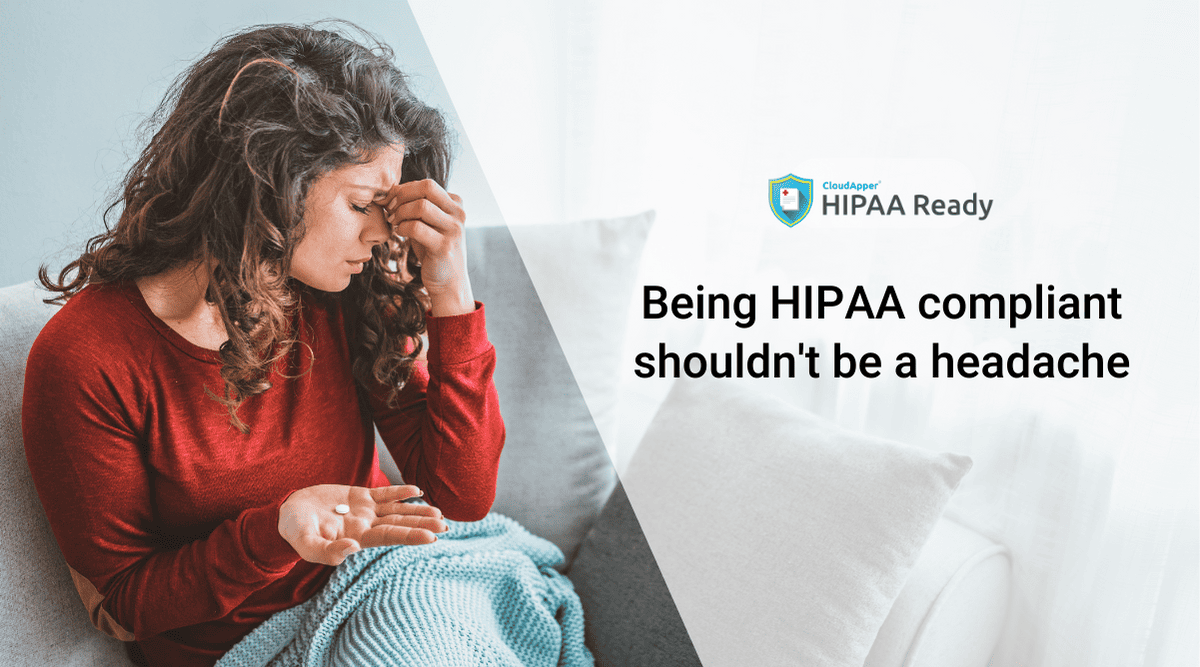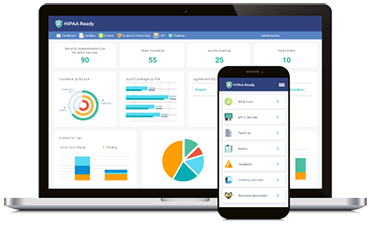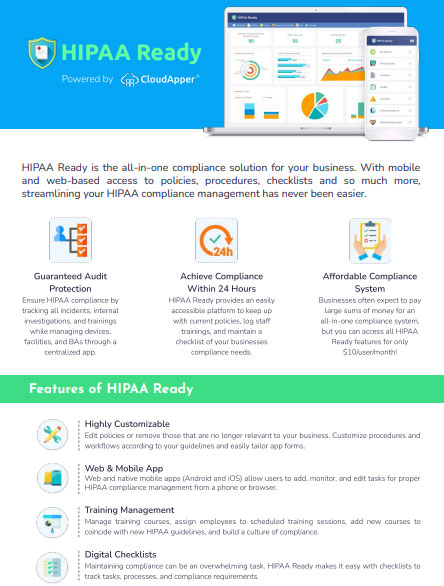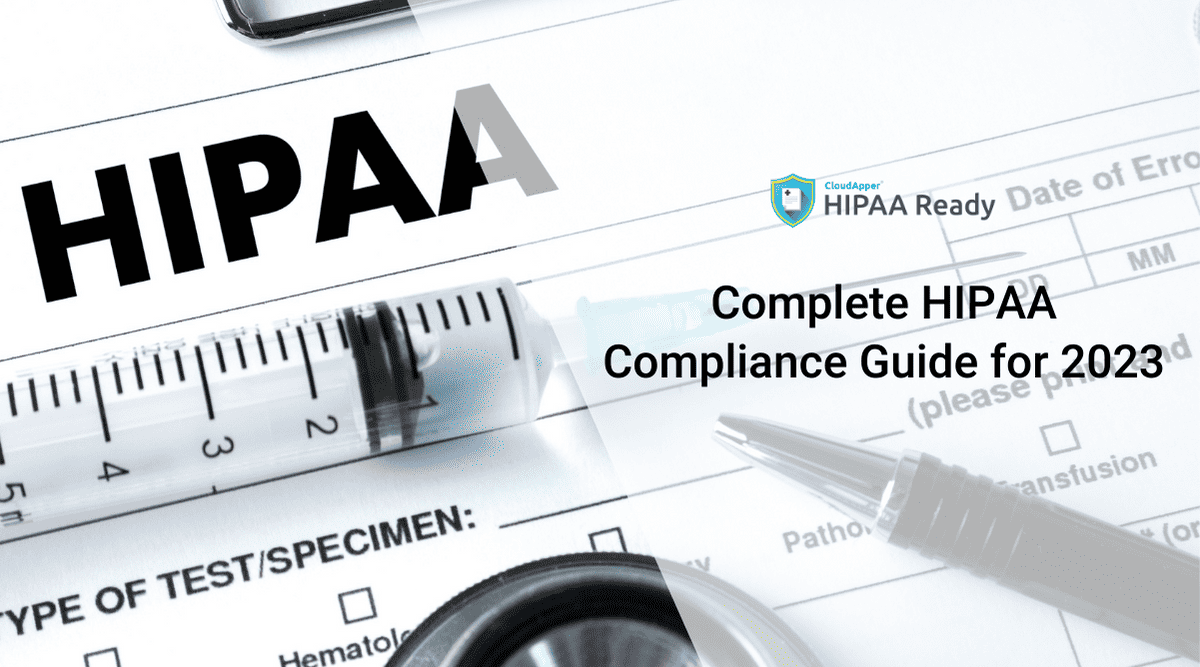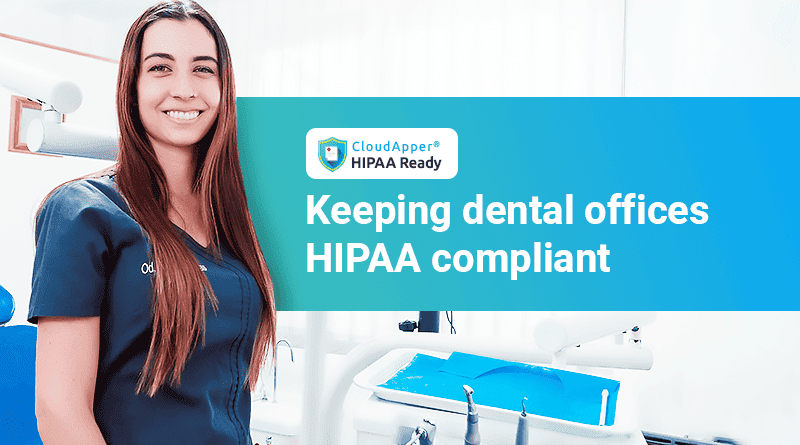Table of Contents
One of the most important aspects of a healthcare organization is HIPAA compliance, which can be difficult to manage with an ever-changing rule. With the implementation of information blocking in 2021 and the proposed HIPAA privacy rule modifications in 2023, staying compliant with healthcare standards is more difficult than ever.
Why do HIPAA changes need to happen?
The Health Insurance Portability and Accountability Act (HIPAA) will need to change as the world does, especially regarding how protected health information (PHI) is stored and shared.
Regulatory compliance is influenced by treatments like telehealth, smartphones in clinical settings, and the digital transmission of ePHI. The regulations that currently govern your practice are there to keep patient data safe from increasing risks as technology advances and the healthcare sector becomes a high-target area for cyberattacks.
The Office for Civil Rights is committed to making it easier for people to access their health information. To do this, the HIPAA Privacy Rule has proposed some changes to make it clearer.
Recent regulations implementing the most comprehensive update to the HIPAA Privacy Rule in nearly two decades are designed to increase privacy. One example is that updates to the rule now allow family members and caregivers to access a patient’s PHI during emergency care. Additionally, revisions will increase flexibility for disclosures of PHI in emergencies.
HIPAA changes in 2022 and 2023
You may feel uncertain about the proposed changes to healthcare privacy and security regulations that are scheduled for 2022 and 2023. There are many proposed laws, requests for information (RFIs), and changes that will affect how successfully covered entities meet regulatory requirements.
It is critical to stay up to date on all regulatory updates in this ever-changing regulatory environment. Some recent changes to keep in mind include:
- In February 2022, the Study of Health Data Use and Privacy Protection was introduced to the Senate.
- The Healthcare Cyber Security Act of 2022 was introduced to the Senate in March 2022.
- The Cyber Incident Reporting for Critical Infrastructure Act was signed into effect on March 15, 2022.
- The Office of Civil Rights requests information, with updates to the HIPAA Security Rule anticipated in late 2022.
- The American Data Privacy and Protection Act was introduced in the House of Representatives on June 21, 2022.
- The proposed changes to the HIPAA Privacy Rule are anticipated for release in Q1 of 2023.
New healthcare privacy and security guidelines are coming into effect, but they’ll all help protect your company’s data and improve your HIPAA compliance. Some of these changes may even make operations more efficient for you.
How to stay HIPAA compliant when regulations change
Despite the confusing nature of HIPAA and other rule changes, you can approach each one by following a similar strategy for success.
To ensure compliance, we always advice following the three-step process of a risk analysis foundation, buy-in from key leaders, and then developing a training strategy.
Step 1: Conduct a risk analysis
Compliance is a delicate thing, and it starts with an analysis of the current risks. But without understanding where you presently stand, there’s no way to go forward. If a regulation changes while you’re out of compliance, you’ll have a ton of work to do.
With the HIPAA law changing, your organization will have up to 180 days from the moment the change is made to comply. But if major changes need to be made, this won’t be nearly enough time.
To be ready for upcoming changes in HIPAA compliance, it’s important to know where your gaps are. A risk analysis will point out any necessary actions that need to be taken to start from a strong position of compliance.
The risk of a regulatory change is hard to predict. That’s why your analysis should find any inconsistencies between your current program and the suggested regulatory changes. Preparing for the eventuality will make things easier for you when it does happen.
In your gap analysis, it’s important to review:
- An in-depth review of your policies to ensure that you are compliant with the existing HIPAA guidelines.
- It’s a good idea to assess how well your employees know and follow the compliance rules.
- HIPAA regulations are changing, and it would be a relief to your business if you had an implementation plan ready to go.
HIPAA Ready offers a Privacy Gap Assessment to help you prepare for the new regulations coming in January 2023.
Step 2: Communicate with leadership
The key to proactive compliance is communication. With HIPAA updates, the compliance department oversees a lot of complicated changes that are difficult for C-level staff and senior executives to understand.
Elements from this example include:
Being proactive by communicating with your leadership team can help them better understand any changes that may be taking place. They might also appreciate it if you get ahead of the game and explain in advance how investments in risk analysis, training, and compliance software can give leaders a head start on any transitions.
When speaking with leadership, emphasize the importance of complying with HIPAA regulations and understanding how they affect other departments. Having a compliance department is critical to protecting the company from any unnecessary risk.
Step 3: Create a plan to train your team
If you implement the changes to HIPAA, you must teach your employees instead of just superficially tweaking your existing policies.
Educating staff about new policies and procedures should be addressed after your risk analysis is complete and you’ve spoken with leadership.
When you’re creating a training program for new company regulations, consider:
Communicating HIPAA changes clearly—in emails, posters, checklists, and videos—provides effective reminders of how important it is to keep up with these updates.
Create content that is interactive and engaging by using text, photos, videos, and quizzes to keep your employees’ attention.
Focusing on workplace scenarios and doing role-playing exercises to illustrate how upgrades will immediately improve day-to-day life.
To avoid going back to previous habits, your employees must understand the changes to HIPAA in detail. Clarity is essential in training so that you can see compliance in action through the efforts of your team members.
HIPAA compliance software supports regulatory transitions
You can do your part to stay in compliance with HIPAA by investing in HIPAA-compliant software like HIPAA Ready. By partnering with us, you can collaboratively develop an effective plan that will help you abide by current regulations and keep you in the clear.
If you use HIPAA Ready, we’ll help you stay compliant with our up-to-date policy templates and training videos. You can create changes to your policies and training, make follow-up quizzes for your team members, and track their progress.
With HIPAA Ready’s software, you’ll be able to integrate with other applications to automatically update your policies, contracts, and forms as soon as new updates are released. You can also use our proactive risk analysis to identify which documents will need updating before any changes are made to the standards. Furthermore, our versioning system will create an auditable record of your compliance and allow you to demonstrate that compliance to the OCR.
Keeping up with HIPAA changes
Compliance is a constantly evolving process. If you stop monitoring it and making the necessary changes, your organization could be vulnerable to new risks that can have a serious impact on your company.
While every regulatory change has its nuances, a system for success can help you achieve HIPAA compliance. Build on a foundation of risk analysis, create open communication with key players, and focus on training your team effectively.
What is CloudApper AI Platform?
CloudApper AI is an advanced platform that enables organizations to integrate AI into their existing enterprise systems effortlessly, without the need for technical expertise, costly development, or upgrading the underlying infrastructure. By transforming legacy systems into AI-capable solutions, CloudApper allows companies to harness the power of Generative AI quickly and efficiently. This approach has been successfully implemented with leading systems like UKG, Workday, Oracle, Paradox, Amazon AWS Bedrock and can be applied across various industries, helping businesses enhance productivity, automate processes, and gain deeper insights without the usual complexities. With CloudApper AI, you can start experiencing the transformative benefits of AI today. Learn More
